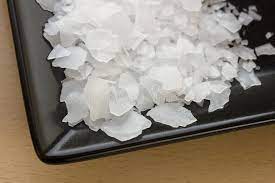
Magnesium oil seems to be all the rage in DIY health and wellness circles these days and with good reason!
Across the United States, the World Health Organization (WHO) estimates that approximately 40% of American adults are actually deficient in magnesium. Symptoms of a magnesium deficiency include insomnia, anxiety, muscle cramps/spasms, fatigue, headaches, heart arrhythmias, osteoporosis, joint or muscle pain, and high blood pressure.
I’ve been deficient in magnesium in the past and for me, it meant migraines, heart palpitations, and restless legs. While I do supplement daily with magnesium tablets, I found that using magnesium oil spray was the best route for restless legs. Also, when I was pregnant with both of my children I had HORRIBLE restless leg syndrome every time I would be sitting still and the only thing that worked for me was spraying my legs down with magnesium oil!

We can definitely up our magnesium levels through our diets by eating foods that are high in magnesium. Some of these foods are dark chocolate (with at least 70% cocoa), avocados, nuts (especially almonds, Brazil nuts, and cashews), tofu, legumes, pumpkin, chia, and flaxseeds, salmon, mackerel, halibut, leafy greens (spinach and kale are excellent sources, okra, potatoes with the skin still attached, and bananas.
The problem with getting all of our magnesium from our diets is that due to nutrient-depleted soils and changes in the way humans absorb nutrients, we just may not be able to absorb enough to give us what we need.

So, what do we do about that?
We need to supplement with magnesium to ensure we’re getting enough and keeping our bodies running at optimal levels. There are 3 ways we can supplement: pill form, liquid form, and my favorite way, magnesium oil spray.
- Pill Form – Magnesium comes in both tablet and soft-gel forms and can be picked up just about anywhere vitamins are sold. The recommended dose is 400 mg daily, but if you’re suffering from a deficiency you may need to take more than that to help your body catch up. You can find my favorite brand here.
- Liquid – If you’re not up for swallowing pills, it also comes in a liquid form that you can drop right into juice, or another beverage of choice. My favorite kind can be found here.
- Magnesium Spray – this allows you to absorb the magnesium in through your skin. You spray yourself down with the magnesium oil, allow it to dry completely, and then you can wash it right off in the shower. You can find my favorite brand here, or make your own with the easy recipe below!

DIY Magnesium Spray
Empty 8-ounce spray bottle
4 ounces distilled water, warmed for 20-30 seconds in the microwave
4 ounces of magnesium flakes
Directions:
- Measure out 4 ounces of distilled water and microwave for 20 to 30 seconds to warm.
- Add 4 ounces of magnesium flakes to the distilled water.
- Stir until the flakes are completely dissolved and allow to cool.
- Pour the mixture into your spray bottle and you’re ready to use it just like you would a store-bought spray!
What I love about making my own spray is that it’s cheaper than buying it already made, it’s simple, and I can adjust my ratio of water to magnesium flakes to make my spray more or less potent. This recipe is a 1:1 ratio of magnesium to water, but you can add more or less of each to have your own custom spray. You may find when you’re just starting out that you need a lower amount of magnesium flakes or your skin becomes irritated. If that happens, just add more water. If you feel like you need more magnesium, you can reheat your water and add more flakes. This recipe is completely adjustable to your needs!
Happy Crafting!
Magnesium is a mineral that is necessary for human health. It participates in about 300 metabolic events in the body and is required for muscles, nerves, and enzymes to operate properly. Magnesium is also necessary for calcium and phosphorus absorption, as well as bone and tooth preservation.
Anxiety, despair, weariness, muscular cramps, and irregular pulse can all be caused by magnesium deficiency. Magnesium shortage has also been related to osteoporosis, hypertension, migraine headaches, and diabetes.
The majority of individuals in the United States do not consume enough magnesium and are at risk of insufficiency. Eating a range of magnesium-rich meals, such as green leafy vegetables, is the best method to guarantee enough magnesium consumption.





Leave a Reply